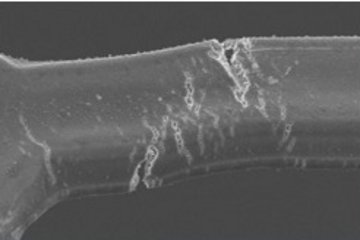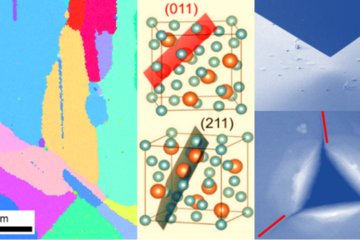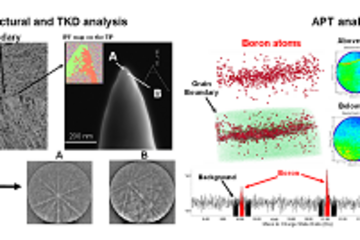All genres
101.
Journal Article
Deciphering Charge Transfer and Electronic Polarization Effects at Gold Nanocatalysts on Reduced Titania Support. The Journal of Physical Chemistry C 123 (9), pp. 5495 - 5506 (2019)
102.
Journal Article
Transferability of interatomic potentials for molybdenum and silicon. Modelling and Simulation in Materials Science and Engineering 27 (2), 025007 (2019)
103.
Journal Article
Discovery of Elusive K4O6, a Compound Stabilized by Configurational Entropy of Polarons. Angewandte Chemie International Edition 58 (1), pp. 149 - 153 (2019)
104.
Journal Article
Temperature dependence of the stacking-fault Gibbs energy for Al, Cu, and Ni. Physical Review B 98, 224106 (2018)
105.
Journal Article
A machine learning approach to model solute grain boundary segregation. npj Computational Materials 4 (1), 64 (2018)
106.
Journal Article
GB code: A grain boundary generation code. The Journal of Open Source Software 3, 900 (2018)
107.
Journal Article
Anomalous Phonon Lifetime Shortening in Paramagnetic CrN Caused by Spin-Lattice Coupling: A Combined Spin and Ab Initio Molecular Dynamics Study. Physical Review Letters 121 (12), 125902 (2018)
108.
Journal Article
110 planar faults in strained bcc metals: Origins and implications of a commonly observed artifact of classical potentials. Physical Review Materials 2 (9), 093606 (2018)
109.
Journal Article
Origin of the Low Magnetic Moment in Fe2AlTi: An Ab Initio Study. Materials 11 (9), 1732 (2018)
110.
Journal Article
Impact of chemical fluctuations on stacking fault energies of CrCoNi and CrMnFeCoNi high entropy alloys from first principles. Entropy 20 (9), 655 (2018)
111.
Journal Article
Precipitate-induced nonlinearities of diffusion along grain boundaries in Al-based alloys. Physical Review Materials 2 (7), 073801 (2018)
112.
Journal Article
Strain-Induced Asymmetric Line Segregation at Faceted Si Grain Boundaries. Physical Review Letters 121 (015702), 015702, pp. 1 - 5 (2018)
113.
Journal Article
Temperature dependence of the Gibbs energy of vacancy formation of fcc Ni. Physical Review B 97 (21), 214106 (2018)
114.
Journal Article
First-Principles Approach to Model Electrochemical Reactions: Understanding the Fundamental Mechanisms behind Mg Corrosion. Physical Review Letters 120 (24), 246801 (2018)
115.
Journal Article
Calculating free energies of point defects from ab initio. Computational Materials Science 148, pp. 249 - 259 (2018)
116.
Journal Article
First-principles calculations for charged defects at surfaces, interfaces, and two-dimensional materials in the presence of electric fields. Physical Review B 97 (20), 205425 (2018)
117.
Journal Article
Ab initio simulation of hydrogen-induced decohesion in cementite-containing microstructures. Acta Materialia 150, pp. 53 - 58 (2018)
118.
Journal Article
Migration mechanisms of a faceted grain boundary. Physical Review Materials 2 (4), 043601 (2018)
119.
Journal Article
Modeling of phase equilibria in Ni–H: Bridging the atomistic with the continuum scale. Metals 8 (4), 280 (2018)
120.
Journal Article
Impact of asymmetric martensite and austenite nucleation and growth behavior on the phase stability and hysteresis of freestanding shape-memory nanoparticles. Physical Review Materials 2 (3), 030601 (2018)











